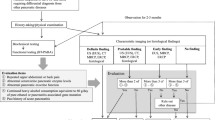Summary
Viable acinar cells were isolated from normal rat pancreas as well as from pancreata pretreatedin situ by a short-term ischemia without and with reperfusion, induction of a pancreatic juice edema, and acute pancreatitis (AP), respectively. The isolated cells were incubated at 37 °C in an oxygenated Krebs-Henseleit bicarbonate buffer lacking any nutrient. As an analogto in vivo acinar cell necrosis, the decline of the isolated cells was followed up in vitro. During the first 5–6 h of incubation, the percentage of damaged cells increased only slightly. A second phase of about 30 min followed, during which nearly all residual cells died. The mean half-life (t50) of the cells in all experimental groups ran to about 330 min, with the exception of the AP group (t50= 132 min). The importance of an intact energy metabolism to prevent premature cell killing was underlined indirectly by the diminished t50 (about 120 min in all groups) of the cells exposed to excess 2,4-dinitrophenol, an uncoupler of oxidative phosphorylation. The results suggest that experimental AP induced by a combination of biliary-pancreatic duct obstruction, stimulation of pancreatic secretion, and short-term pancreatic ischemia with subsequent reperfusion finds a reflection within the acinar cells themselves and that these effects are not clouded by the isolation procedure. Thus, the application of acinar cells isolated from pancreatic glands pretreatedin situ may offer a new tool for pathophysiological research into AP at the cellular level.
Similar content being viewed by others
References
Steer ML. Etiology and pathophysiology of acute pancreatitis. The Exocrine Pancreas: Biology, Pathobiology, and Diseases, Go VLW, Brooks FP, DiMagno EP, Gardner JD, Lebenthal E, and Scheele GA eds., Raven, New York, 1986: 465–474.
Steer ML and Meldolesi J. The cell biology of experimental pancreatitis. N. Engl. J. Med. 1987; 316: 144–150.
Steer, ML and Meldolesi J. Pathogenesis of acute pancreatitis. Ann. Rev. Med. 1988; 39: 95–105.
Letko G, Sokolowski A, Spormann H, and Heinrich P. A hierarchic approach for experimental investigations into the pathogenesis of acute pancreatitis. Dt. Z. Verdau. Stoffwechselkr. 1985; 45: 59–67.
Letko G, Hass H-J, and Spormann HO. Wirkung von Anoxie und Entkopplung auf die Vitalität isolierter Azinuszellen aus Rattenpankreas. Z. Klin. Med. 1987; 42: 603–605.
Schulz H-U, Letko G, Hass H-J, Spormann H, Kemnitz P, Burger P, and Wendt U. Effects of pancreatic acinar cell surface antibodies and complement on isolated rat acinar cells in vitro. Virchows Arch. [B] 1988; 55: 101–106.
Letko G, Falkenberg B, and Wilhelm W. Effects of trypsin, chymotrypsin and uncoupling on survival of isolated acinar cells from rat pancreas. Int. J. Pancreatol. 1989; 4: 131–442.
Leaf A, Cheung JY, Mills JW, and Bonventre JV. Nature of the cellular insult in acute renal failure. Acute Renal Failure, Brenner BM and Lazarus JM, eds., WB Saunders, Philadelphia, 1983: 2–20.
Letko, G. and Kuster U, Möglichkeiten und Erfahrungen bei der Intaktheitsbeurteilung von Hepatozyten. Wiss. Z. Humboldt-Univ. Berlin, R. Med. 1988; 37: 81–83.
Steer ML and Meldolesi J. Experimental acute pancreatitis: relevance of models to clinical disease. Pancreatitis: Concepts and Classification, Gyr KE, Singer MV, and Sarles H, eds., Elsevier, Amsterdam, 1984: 137–141.
Steer ML. Workshop on experimental pancreatitis. Dig. Dis. Sci. 1985; 30: 575–581.
Adler G, Kern HF, and Scheele GA. Experimental models and concepts in acute pancreatitis. The Exocrine Pancreas: Biology, Pathobiology, and Diseases, Go VLW, Brooks FP, DiMagno EP, Gardner JD, Lebenthal E, and Scheele GA, eds., Raven, New York, 1986: 407–421.
Niederau C, Ferrell LD, and Grendell JH. Experimentelle akute Pankreatitis. Internist 1986; 27: 681–696.
Popper HL, Necheles H, and Russell KC. Transition of pancreatic edema into pancreatic necrosis. Surg. Gynecol. Obstet. 1948; 87: 79–82.
Becker V. Bauchspeicheldrüse (Inselapparat ausgenommen). Spezielle Pathologische Anatomie, Vol. 6, Doerr W, Seifert H, and Uehlinger E, eds., Springer-Verlag, Berlin, 1973.
Kaplan MH. Stress, pancreatic perfusion, and acute pancreatitis: a unified concept of pathogenesis. Mt Sinai J. Med. 1985; 52: 326–330.
Gyr KE, Singer MV, and Sarles H. Revised classification of pancreatitis—Marseille 1984. Pancreatitis: Concepts and Classification, Gyr KE, Singer MV, and Sarles H, eds., Elsevier, Amsterdam, 1984: xxiii-xxv.
Krebs HA and Henseleit K. Untersuchungen über die Harnstoffbildung im Tierkörper. Hoppe-Seylers Z. Physiol. Chem. 1932; 210: 33–66.
Schulz H-U, Letko G, Spormann H, Sokolowski A, and Kemnitz P. An optimized procedure for isolation of rat pancreatic acinar cells. Anat. Anz. 1988; 167: 141–150.
Eagle H. Amino acid metabolism in mammalian cell cultures. Science 1959; 130: 432–437.
Sachs L. Applied Statistics. A Handbook of Techniques. Second ed., Springer Int, New York, 1984.
Papp M, Fodor I, Varga G, and Folly G. Pancreatic edema: its effect on the function and morphology of the pancreas in dogs and rats. Mt. Sinai J. Med. 1982; 49: 456–464.
Warshaw AL and O’Hara PJ. Susceptibility of the pancreas to ischemie injury in shock. Ann. Surg. 1978; 188: 197–201.
Florack G, Sutherland DER, Ascherl R, Heil J, Erhardt W, and Najarian JS. Definition of normothermic ischemia limits for kidney and pancreas grafts. J. Surg. Res. 1986; 40: 550–563.
Spormann H, Sokolowski A, and Letko G. Effect of temporary ischemia upon develop ment and histological patterns of acute pancreatitis in the rat. Pathol. Res. Pract. 1989; 184: 507–513.
Takahashi T and Yaginuma N. Ischemie injury of the human pancreas: its basic patterns correlated with the pancreatic microvasculature. Pathol. Res. Pract. 1985; 179: 645–651.
Schmid-Schönbein GW. Capillary plugging by granulocytes and the no-reflow phenomenon in the microcirculation. Fed. Proc. 1987; 46: 2397–2401.
Wolbarsht ML and Fridovich I. Hyperoxia during reperfusion is a factor in reperfusion injury. Free Radical Biol. Med. 1989; 6: 61–62.
Author information
Authors and Affiliations
Rights and permissions
About this article
Cite this article
Schulz, H.U., Letko, G. & Spormann, H. Decreased survival rate of pancreatic acinar cells isolated from rats with acute pancreatitis. Int J Pancreatol 6, 219–230 (1990). https://doi.org/10.1007/BF02924290
Received:
Revised:
Accepted:
Issue Date:
DOI: https://doi.org/10.1007/BF02924290




